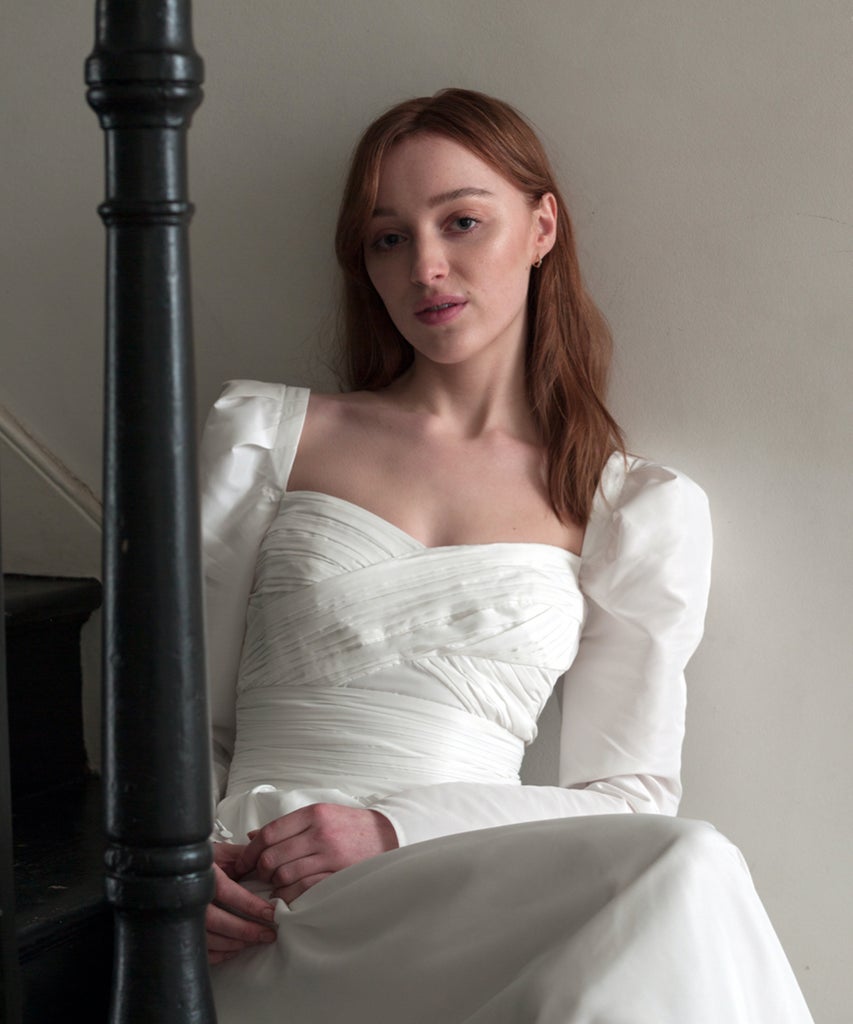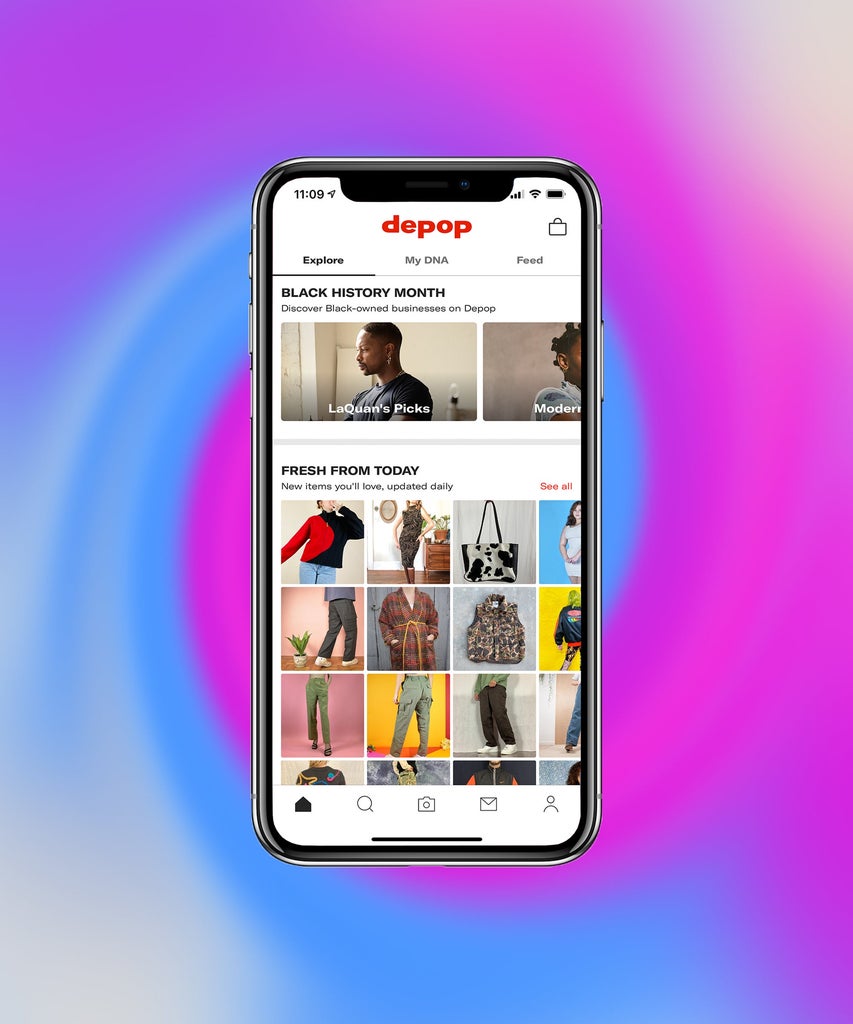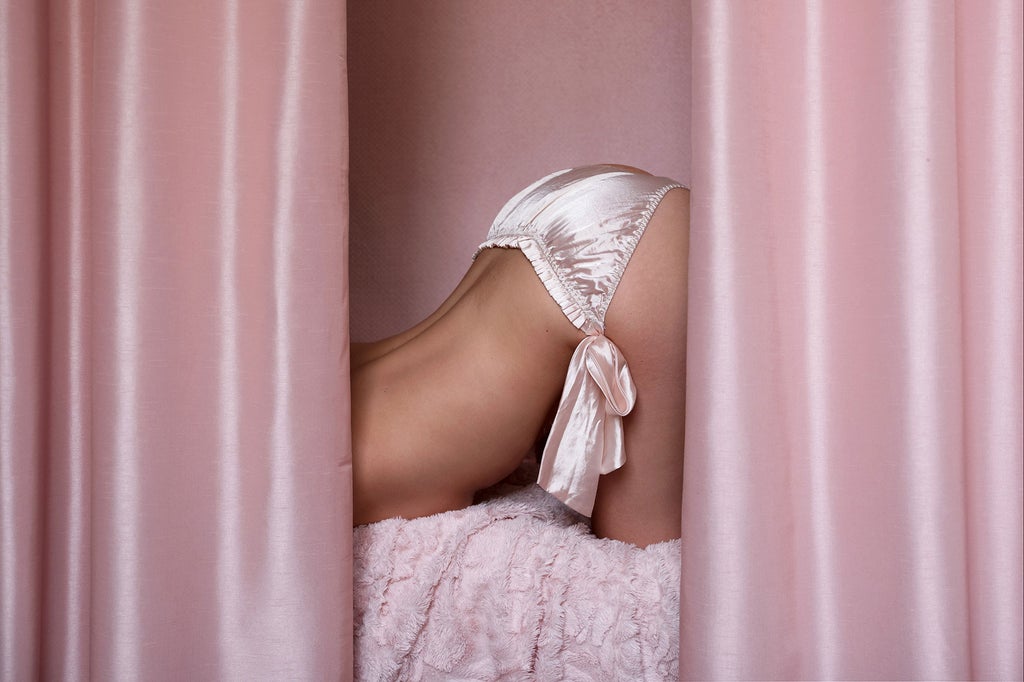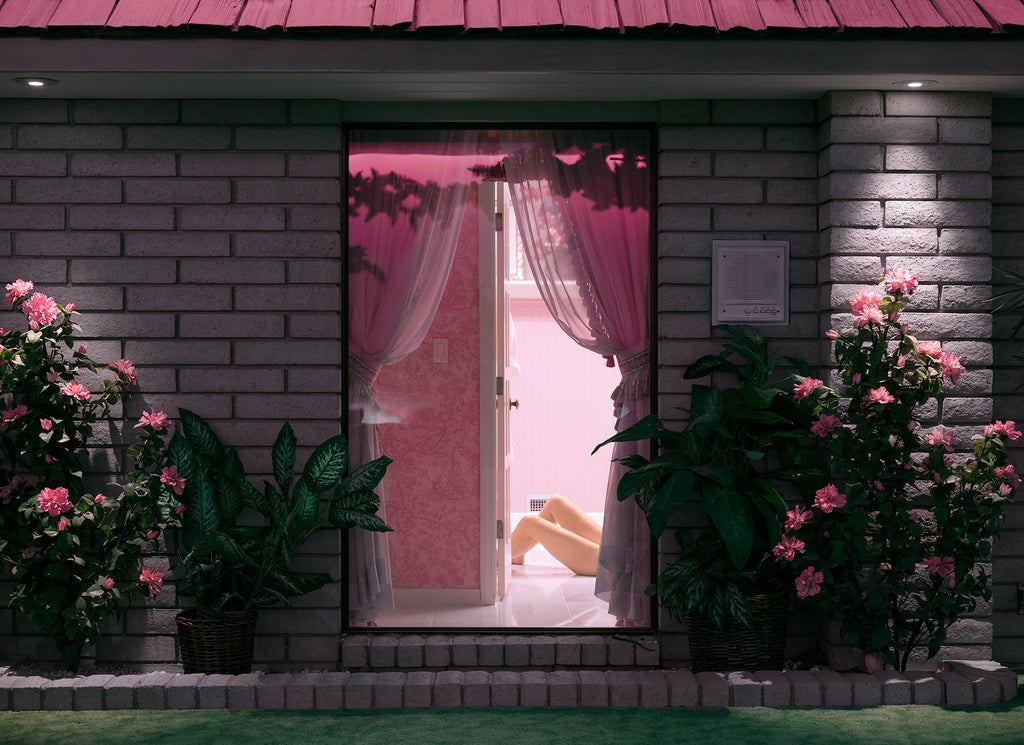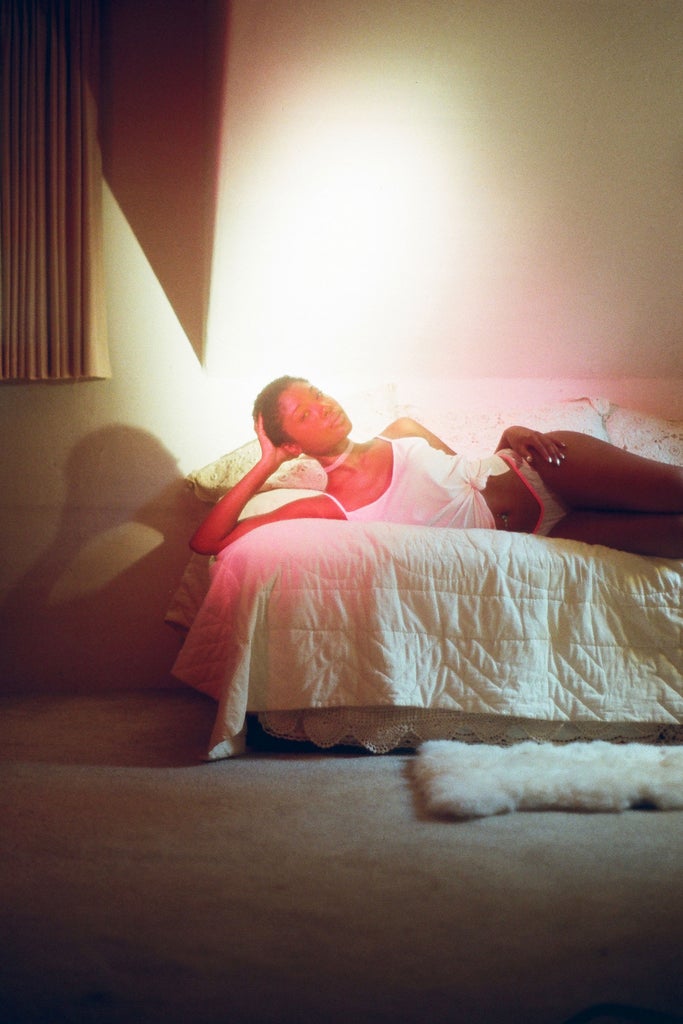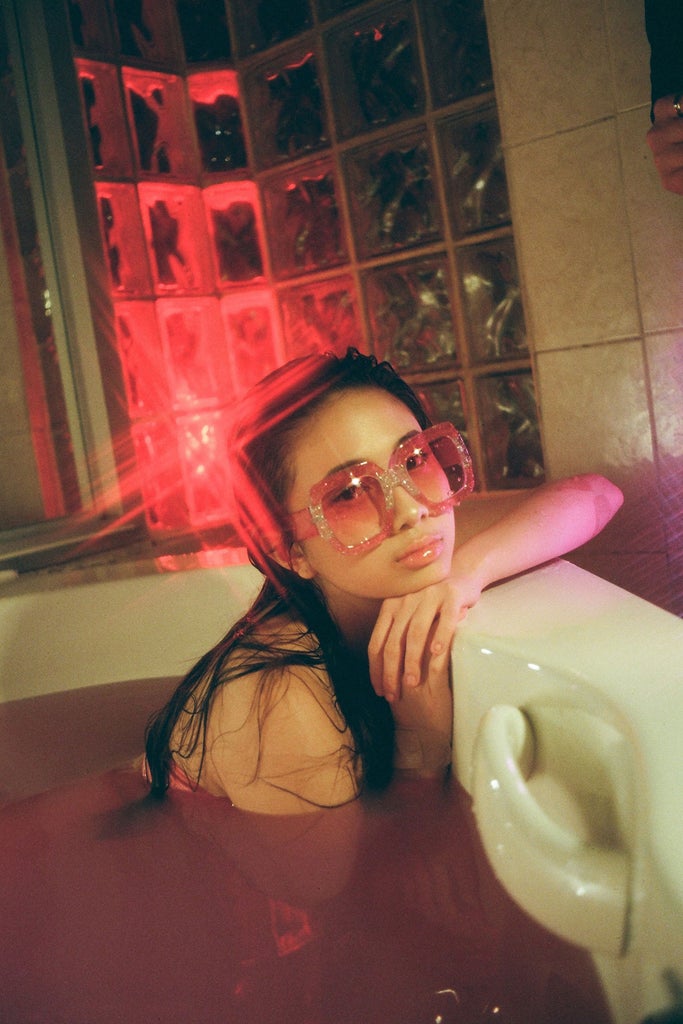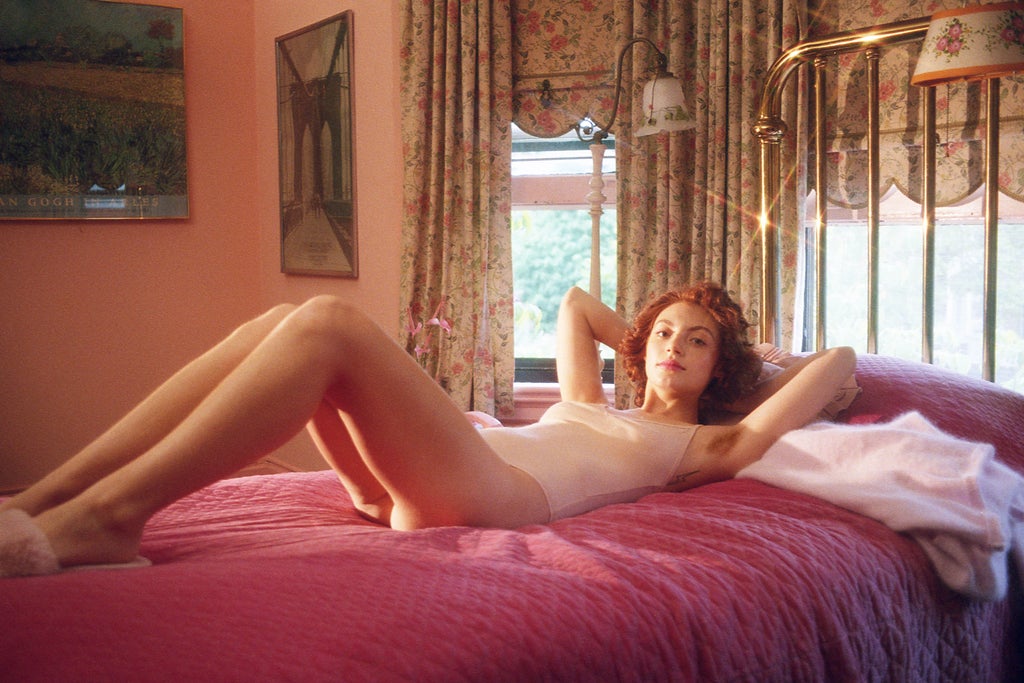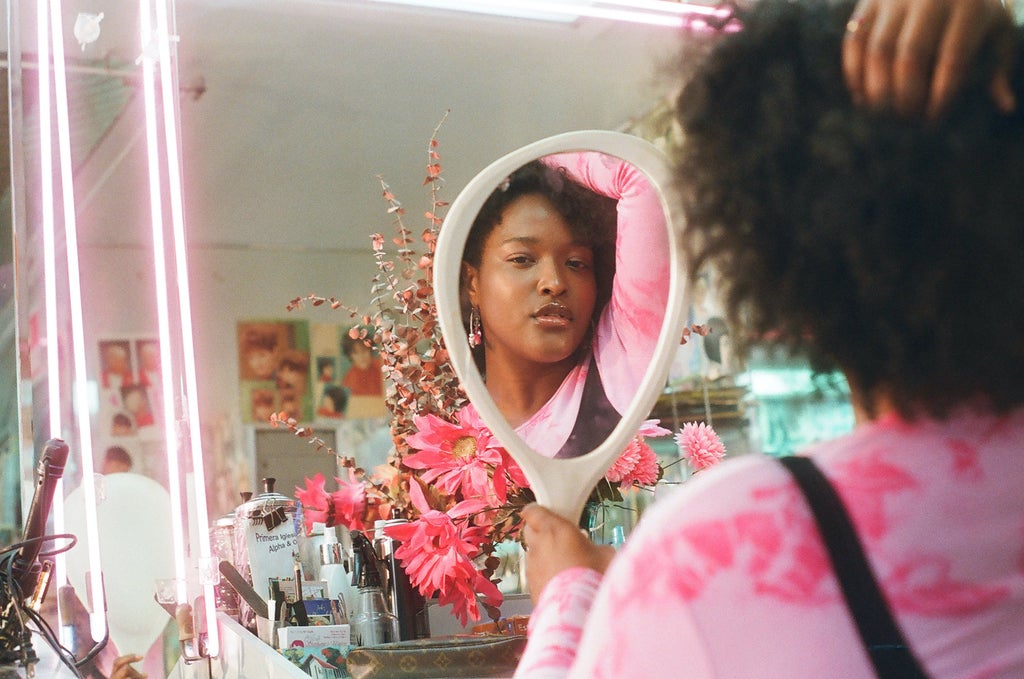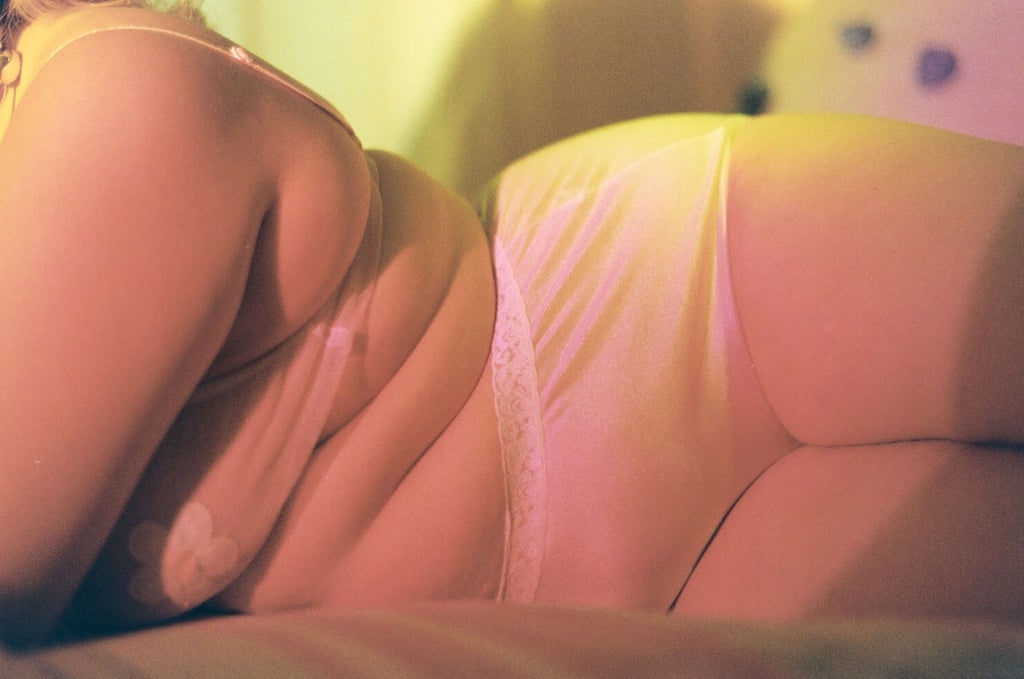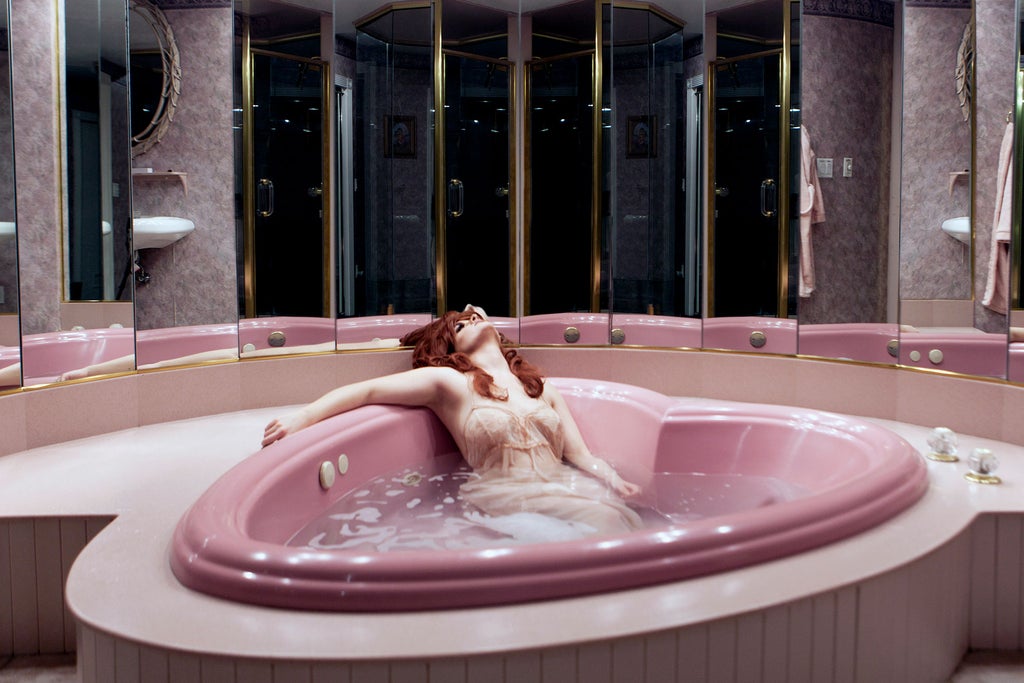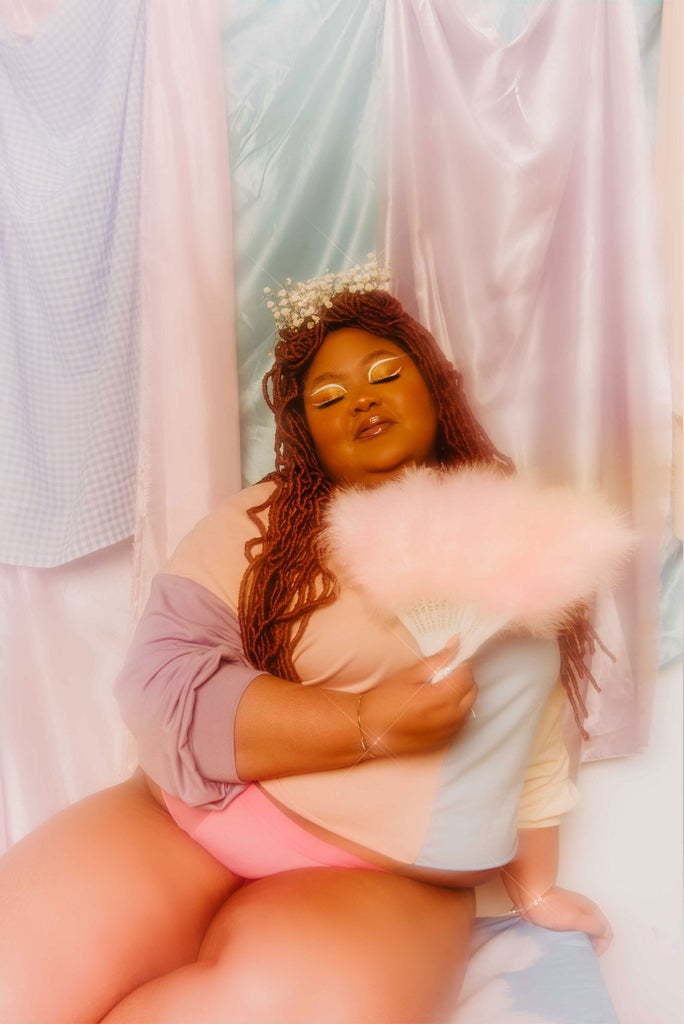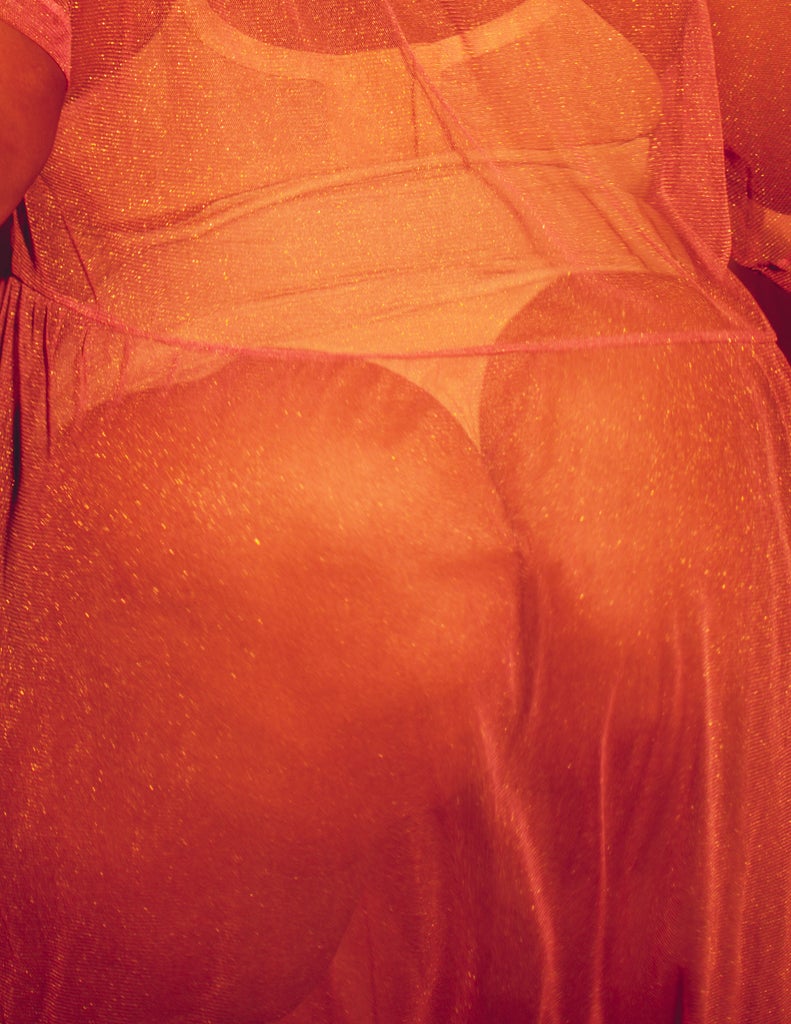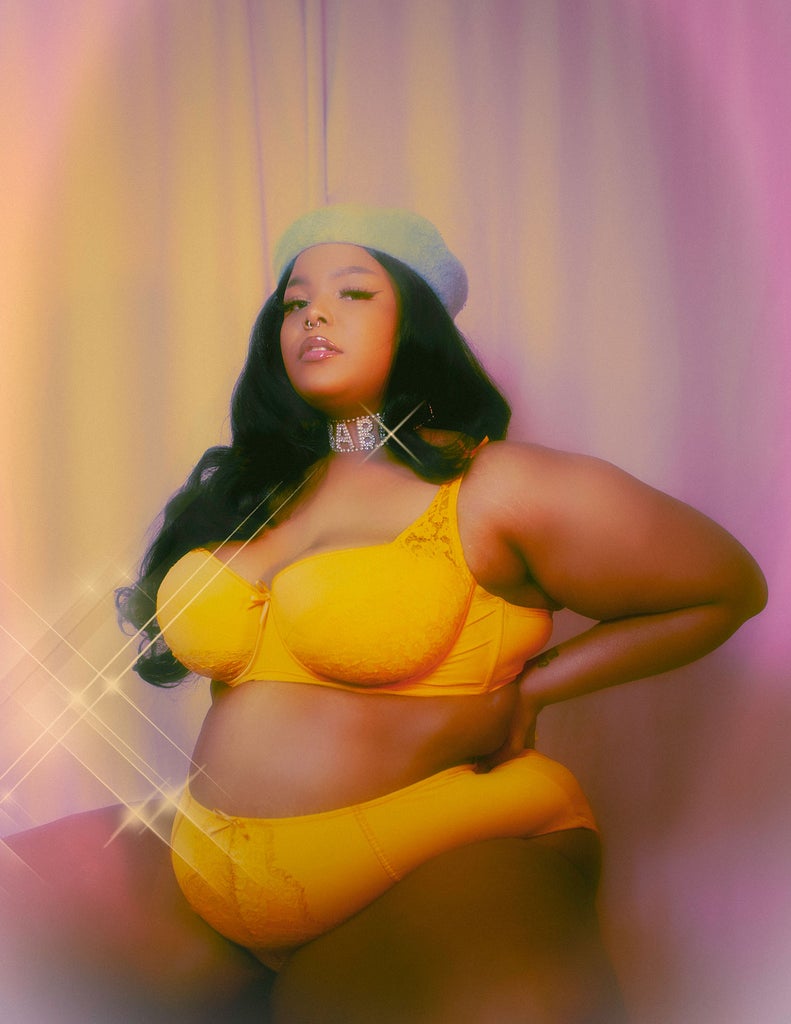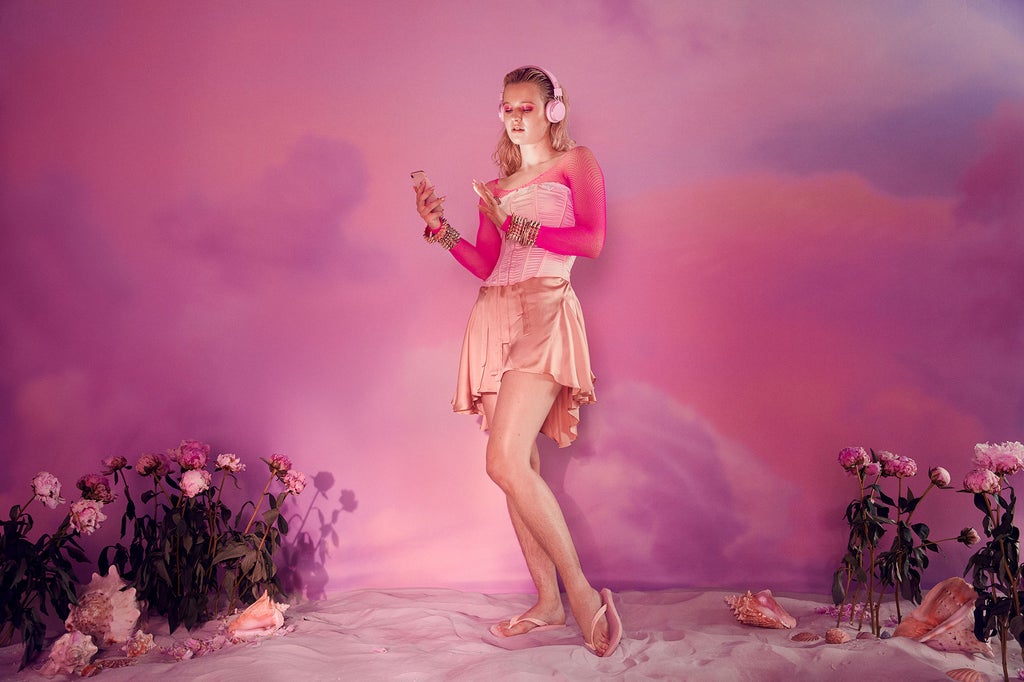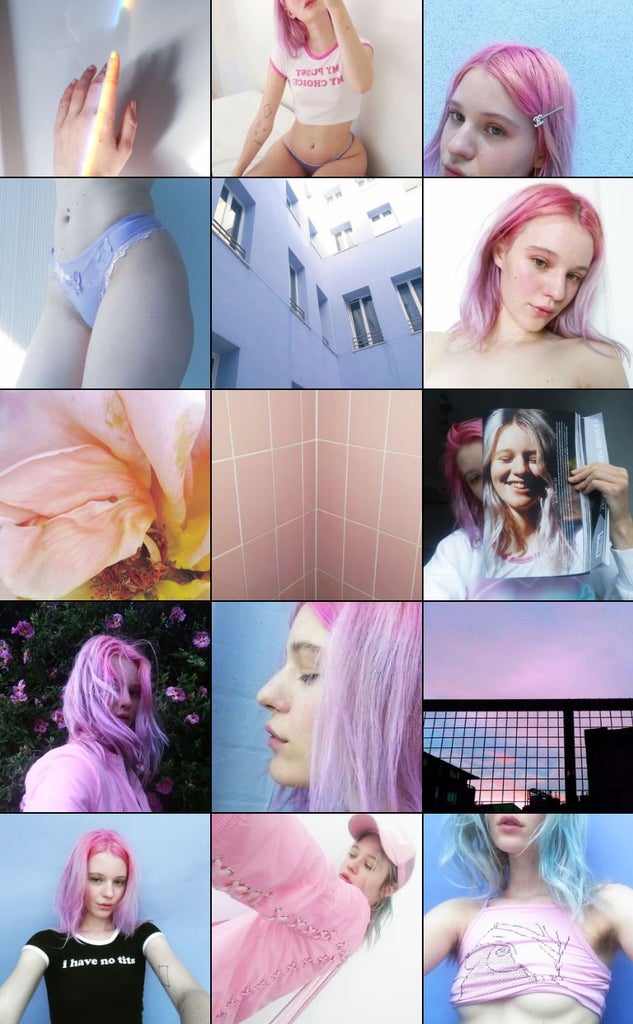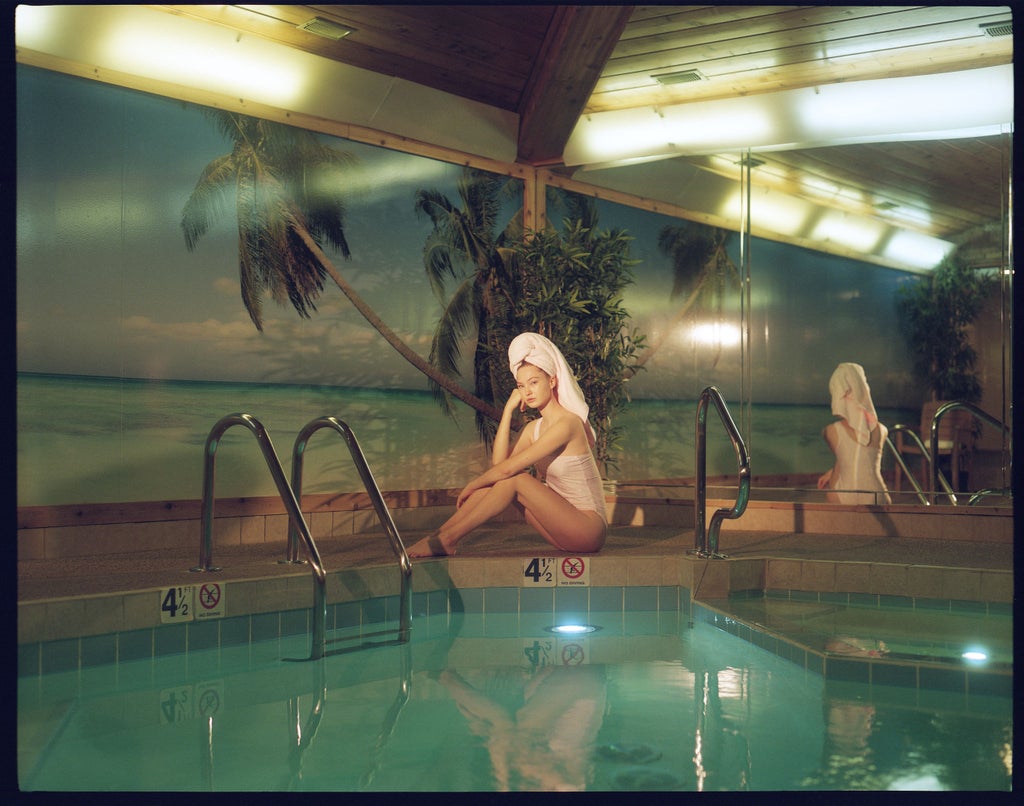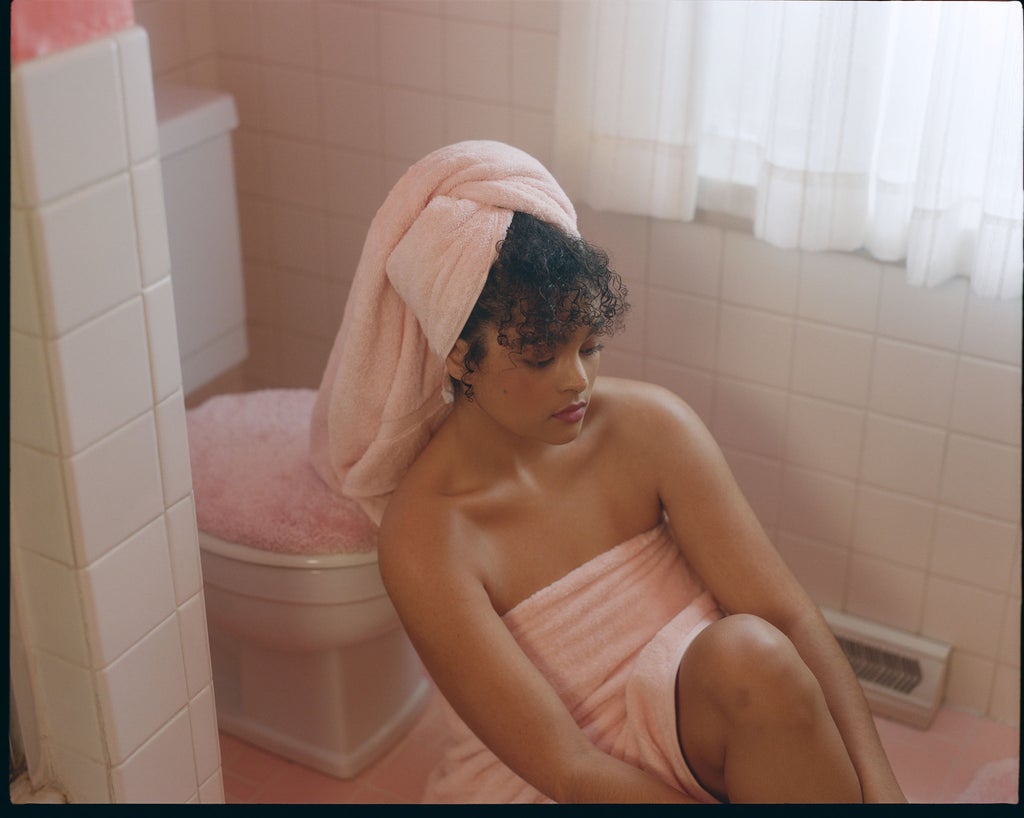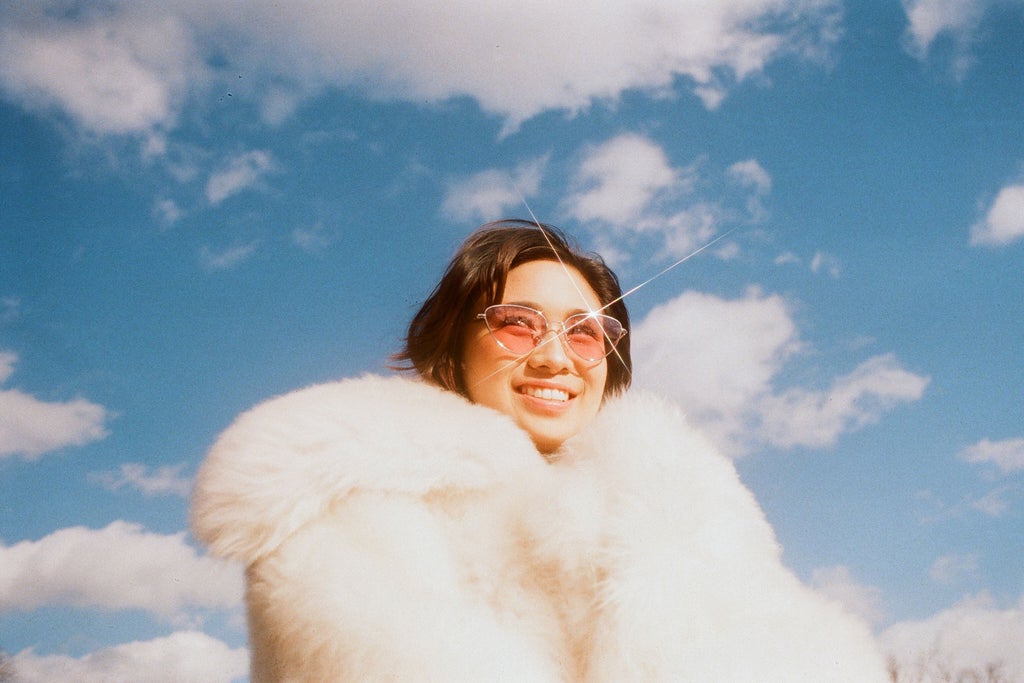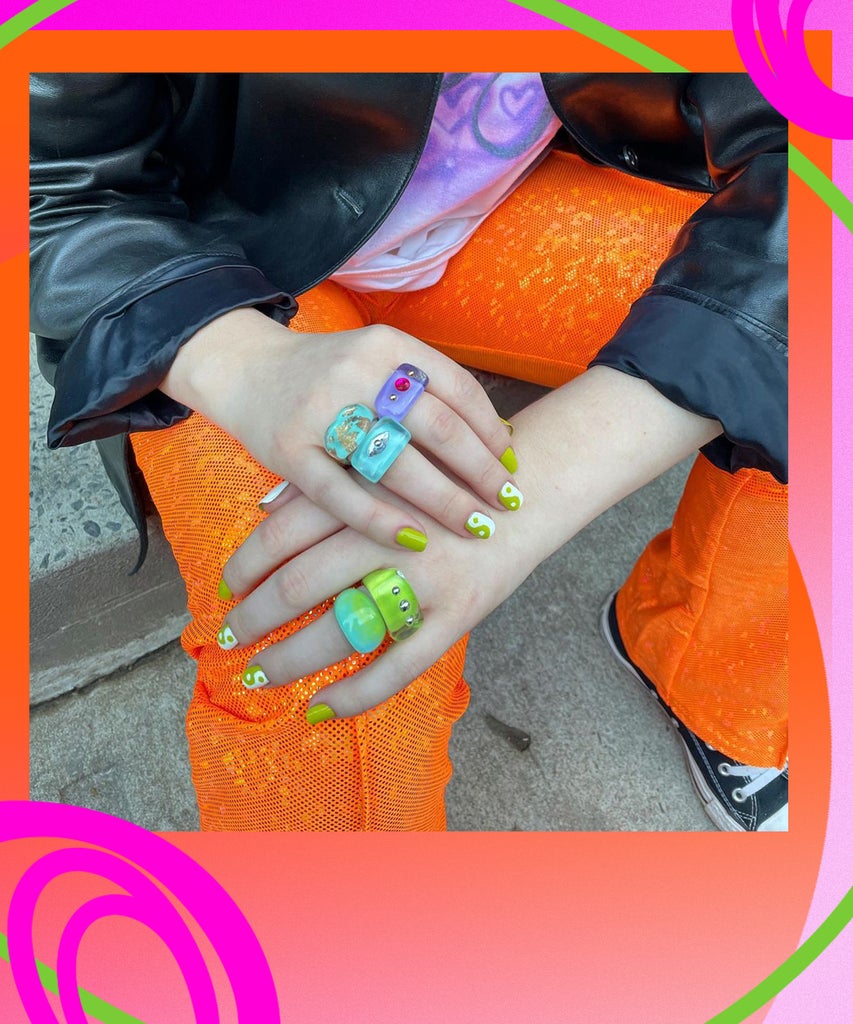
If you’re on TikTok, you’ve likely seen the colorful, plastic rings that line the fingers of users across the platform. Playful and somewhat child-like, the lucite styles feature decorative baubles like gemstones, are oversized, and come in oval and rectangular shapes. Often, wearers pile on several rings, of different colors and shapes, not unlike how we did with Ring Pops back in the day.
While they’re everywhere on the platform, you’re guaranteed to spot them on Brooklyn- and downtown Manhattan-based 20-somethings, who spend their Saturdays taping Day In The Life videos that involve brunch at Ruby’s and trips to the East Village shop Here Nor There, where many are purchasing the rings. According to the store’s TikTok, since being featured on the platform, they’ve sold out of and subsequently had to restock their rings, which range in color from hot pink to lime green, and include kitschy designs. They’re accessible — $15 to $20 — and sustainable — celebrity stylist Julia Copeland’s store offers a variety of reworked vintage — and, as such, beloved by Gen Z.
@herenortherenyc yes, they’re really $15 ☁️💗✨🧚♂️💌 #tiktokfashion #tiktokstyle #nyc #eastvillage #manhattan #rings #trendy #lamanso #monchermoi
♬ Somebody to love Basstrologe Bootleg – mthekyng
Here Nor There isn’t the only shop supplying TikTok users with rings to match their brightly colored nails — lucite jewelry hauls from eBay and Etsy are aplenty. While “drinking one night,” Olivia Josephsen ordered them in bulk on eBay. She later realized that they were child-sized, which isn’t that surprising since the style does resemble something many kids return from summer camp with. “A lot of these were definitely made by children, but, like, I’m here for it,” Josephsen says in the TikTok haul video, showing off the colorful (and adult-sized) rings she replaced them with.
The trend isn’t entirely new. Prior to TikTok popularizing the throwback trend this year, resin rings could be found at niche boutiques, in the form of glass-blown styles by Maryam Nassir Zadeh and Jane D’arensbourg, for upwards of $300. Though made with high-quality materials, they are not accessible to many.
Knowing this, users have kick-started a DIY movement. One teen who goes by the username @queenslairbykatie launched an Etsy shop, where she sells handmade rings. “As a high schooler, I understand that teens don’t have that money so I will be selling them for $8.97,” she says in a video. She’s not alone. Tons of other Gen Zers are also DIYing resin and lucite rings, and proceeding to sell them on platforms like Depop and Instagram. On TikTok, #resinrings has over 5.6 million views, while #plasticrings has almost 200,000. #Clayrings — another ring trend — has 14.2 million views.
Celebrities like Miley Cyrus, Dua Lipa, and Bella Hadid are propelling the statement ring trend beyond the platform. On Wednesday, fashion search engine Lyst reported that interest in plastic rings has been rising since January. Searches for “resin rings” are up 28% month-on-month, according to the site, with the keywords “chunky” and “bold” being the most frequently used. “Colorful rings” are also spiking, with page views for the keyword up 19% since the beginning of February. According to its findings, the most sought-after colors are neon green, hot pink, and yellow.
Lipa and Hadid’s rings are by Barcelona-based brand La Manso. The brand was founded three years ago by Adriana Manso, who was inspired by her grandmother’s ring collection. “We want to be at your cocktails, in the supermarket queue, sweating in the gym, or swimming in the pool,” the website reads. “We promise to be the center of attention, at any time and in any situation.” Manso’s goal of taking the expense and “carats” out of luxury jewelry shopping — she sells her rings for between $55 and $80, which, while not cheap, is more affordable than some of the other offerings — is obviously catching on.
Given that the candy-like ring options previously available were out of reach for most of Gen Z, it’s understandable that teens would turn to shops like Here Nor There for more accessible alternatives. Or better yet, DIY options. (TikTok is crafty like that.)
Ahead, resin and plastic rings to shop now.
At Refinery29, we’re here to help you navigate this overwhelming world of stuff. All of our market picks are independently selected and curated by the editorial team. If you buy something we link to on our site, Refinery29 may earn commission.
Like what you see? How about some more R29 goodness, right here?
Lizzo Can’t Stop Wearing This Top On TikTok

